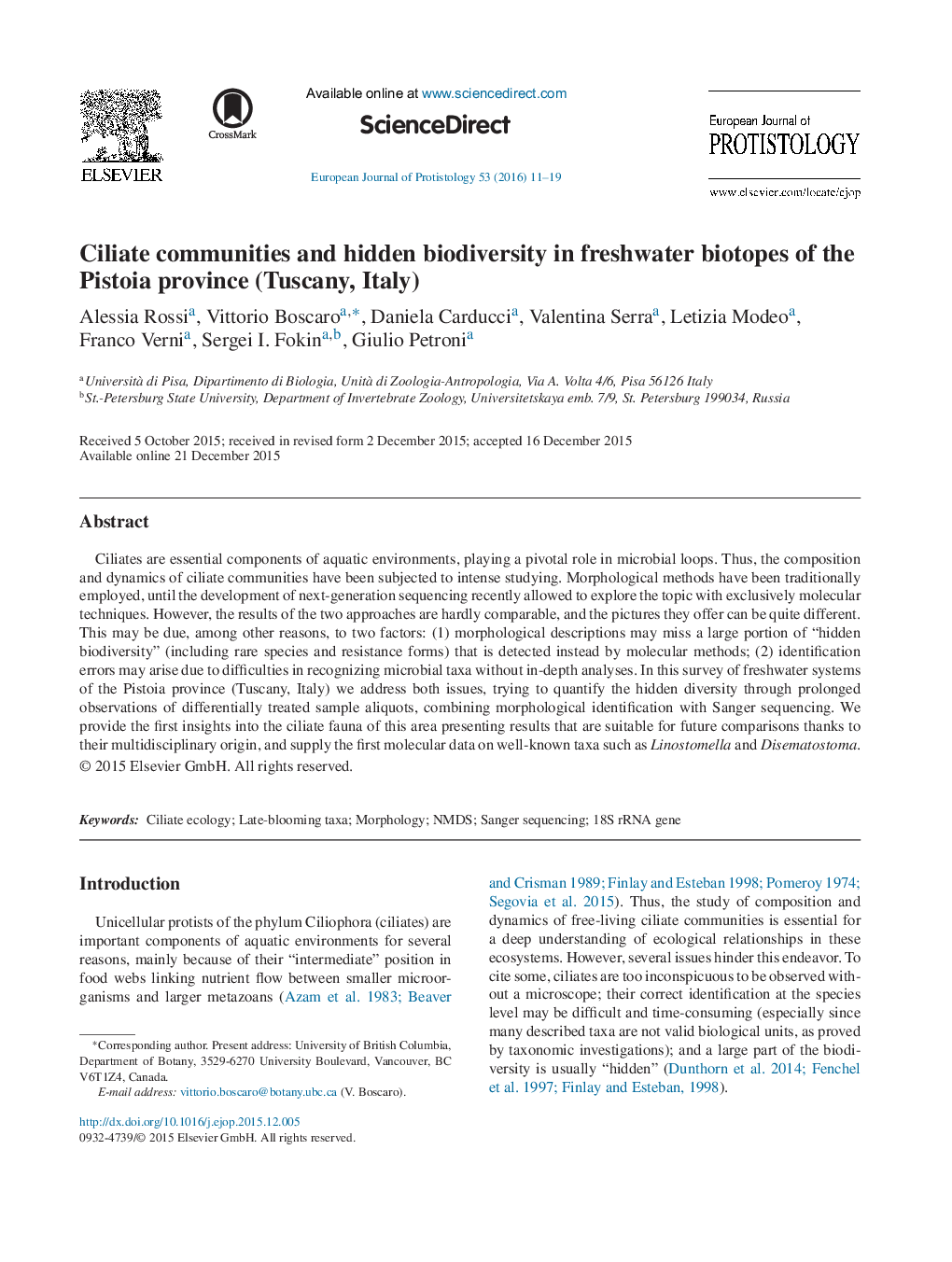| Article ID | Journal | Published Year | Pages | File Type |
|---|---|---|---|---|
| 2046983 | European Journal of Protistology | 2016 | 9 Pages |
Ciliates are essential components of aquatic environments, playing a pivotal role in microbial loops. Thus, the composition and dynamics of ciliate communities have been subjected to intense studying. Morphological methods have been traditionally employed, until the development of next-generation sequencing recently allowed to explore the topic with exclusively molecular techniques. However, the results of the two approaches are hardly comparable, and the pictures they offer can be quite different. This may be due, among other reasons, to two factors: (1) morphological descriptions may miss a large portion of “hidden biodiversity” (including rare species and resistance forms) that is detected instead by molecular methods; (2) identification errors may arise due to difficulties in recognizing microbial taxa without in-depth analyses. In this survey of freshwater systems of the Pistoia province (Tuscany, Italy) we address both issues, trying to quantify the hidden diversity through prolonged observations of differentially treated sample aliquots, combining morphological identification with Sanger sequencing. We provide the first insights into the ciliate fauna of this area presenting results that are suitable for future comparisons thanks to their multidisciplinary origin, and supply the first molecular data on well-known taxa such as Linostomella and Disematostoma.
